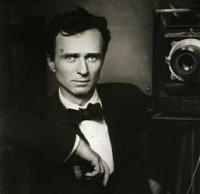BIOGRAPHY

1879-1973
A giant of twentieth-century photography and curatorship, Edward Steichen worked as a lithography apprentice and painter while attending lectures at the Art Students League in New York. The interpretive style of his pictorialist photographs captured the imagination of Alfred Stieglitz, whose Gallery 291, the Intimate Gallery and the journal Camera Work, cofounded with Steichen, chronicled his soft imagery. Steichen was at the vanguard of the Photo-Secession movement, derived from Symbolist and Impressionist art, and color photography, with the Lumière Autochrome process. His oeuvre included portraiture of the celebrated – Greta Garbo, Marcel Duchamp, Pola Negri and J. P. Morgan among them.
Wartime aerial photography morphed Steichen’s style to Modernist tenets that were further honed in his fashion imagery with Condé Nast. After serving as director of the World War II Naval Photographic Institute, Steichen became director of The Museum of Modern Art Photography Department. There he organized the extraordinarily popular exhibition The Family of Man, an attempt to explain “man to man and each to himself” through photography. The Getty Museum, the National Gallery of Art and The Museum of Modern Art are among the institutions collecting Steichen’s work.
